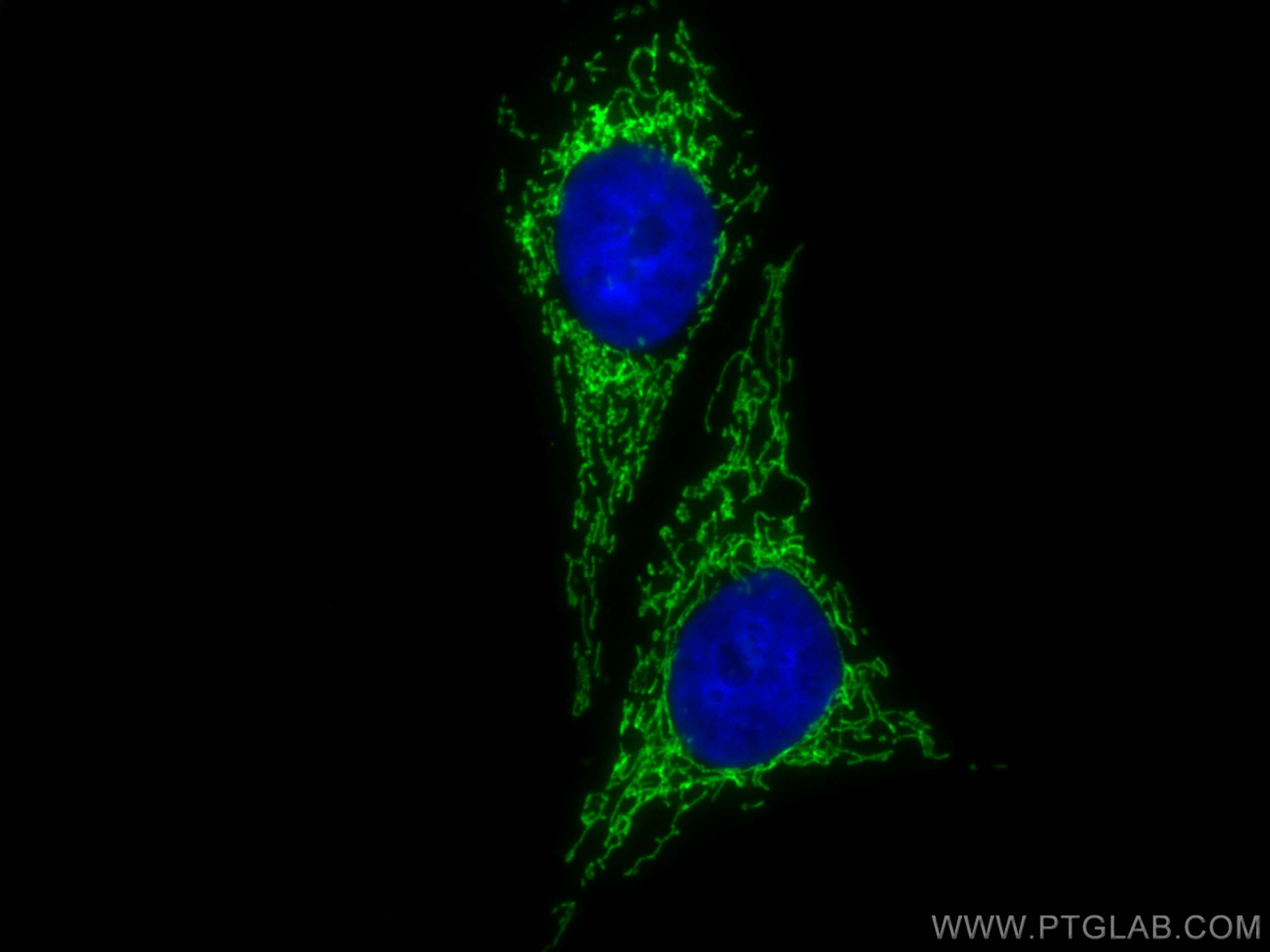- Phare
- Validé par KD/KO
Anticorps Polyclonal de lapin anti-ATPIF1
ATPIF1 Polyclonal Antibody for IF/ICC
Hôte / Isotype
Lapin / IgG
Réactivité testée
Humain
Applications
IF/ICC
Conjugaison
CoraLite® Plus 488 Fluorescent Dye
N° de cat : CL488-12067
Synonymes
Galerie de données de validation
Applications testées
| Résultats positifs en IF/ICC | cellules HepG2, |
Dilution recommandée
| Application | Dilution |
|---|---|
| Immunofluorescence (IF)/ICC | IF/ICC : 1:50-1:500 |
| It is recommended that this reagent should be titrated in each testing system to obtain optimal results. | |
| Sample-dependent, check data in validation data gallery | |
Informations sur le produit
CL488-12067 cible ATPIF1 dans les applications de IF/ICC et montre une réactivité avec des échantillons Humain
| Réactivité | Humain |
| Hôte / Isotype | Lapin / IgG |
| Clonalité | Polyclonal |
| Type | Anticorps |
| Immunogène | ATPIF1 Protéine recombinante Ag2704 |
| Nom complet | ATPase inhibitory factor 1 |
| Masse moléculaire calculée | 106 aa, 12 kDa |
| Poids moléculaire observé | 12 kDa |
| Numéro d’acquisition GenBank | BC009677 |
| Symbole du gène | ATPIF1 |
| Identification du gène (NCBI) | 93974 |
| Conjugaison | CoraLite® Plus 488 Fluorescent Dye |
| Excitation/Emission maxima wavelengths | 493 nm / 522 nm |
| Forme | Liquide |
| Méthode de purification | Purification par affinité contre l'antigène |
| Tampon de stockage | PBS with 50% glycerol, 0.05% Proclin300, 0.5% BSA |
| Conditions de stockage | Stocker à -20 °C. Éviter toute exposition à la lumière. Stable pendant un an après l'expédition. L'aliquotage n'est pas nécessaire pour le stockage à -20oC Les 20ul contiennent 0,1% de BSA. |
Informations générales
The H(+)-ATP synthase is a reversible engine of mitochondria that synthesizes or hydrolyzes ATP upon changes in cell physiology. ATP synthase dysfunction is involved in the onset and progression of diverse human pathologies. ATPIF1 gene encodes mitochondrial ATPase Inhibitory Factor 1 (IF1), also named ATPI, ATPIP or IP. Endogenous IF1 limits ATP depletion when the mitochondrial membrane potential falls below a threshold and the ATP synthase starts hydrolyzing ATP to pump protons out of the mitochondrial matrix. Mitochondrial content of IF1 controls the activity of oxidative phosphorylation mediating the shift of cancer cells to an enhanced aerobic glycolysis, thus supporting an oncogenic role of IF1 in cancer.
Protocole
| Product Specific Protocols | |
|---|---|
| IF protocol for CL Plus 488 ATPIF1 antibody CL488-12067 | Download protocol |
| Standard Protocols | |
|---|---|
| Click here to view our Standard Protocols |


